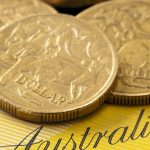Yesterday’s trade saw USD/JPY within the range of 123.65-124.20. The pair closed at 123.92, down 0.04% on a daily basis. The daily high has also been the highest level since July 21st, when the cross registered a high of 124.50.
At 7:40 GMT today USD/JPY was up 0.02% for the day to trade at 123.94. The pair touched a daily high at 124.05 at 1:49 GMT.
Fundamentals
United States
Manufacturing PMI by Markit – preliminary estimate
Manufacturing activity in the United States probably remained unchanged in July, with the corresponding preliminary Purchasing Managers Index coming in at a reading of 53.6. In June the final seasonally adjusted PMI stood at 53.6, improving from a preliminary reading of 53.4.
According to Markits statement: ”The employment subindex rose to 55.5 in June, the highest level since September 2014, from 54.6 in May. Despite weaker output growth and only a slight acceleration in total new business gains, the latest survey highlighted the fastest increase in payroll numbers since September 2014.
The output subindex slowed to 53.9, the lowest level since January 2014, from 55.2 in May. Reports from survey respondents suggested that subdued export sales and weaker investment spending patterns in the energy sector had weighed on output growth. Overall volumes of new work increased at a slightly faster pace than the 16-month low seen in May.”
Values above the key level of 50.0 indicate optimism (expanding activity). In case the flash manufacturing PMI showed a better-than-anticipated performance, this would have a certain bullish effect on the US dollar. The preliminary data by Markit Economics is due out at 13:45 GMT.
New Home Sales
Sales of new single-family homes probably remained unchanged at the seasonally adjusted annual rate of 546 000 during June, according to market expectations. The index of new home sales surged 2.2% to the annual rate of 546 000 in May, which has been the highest level since February 2008, when a figure of 575 000 was reported. Mays figure was supported by a 87.5% increase in sales in the Northeast region and a 13.1% surge in the West.
The median sales price of new homes sold was USD 282 800 in May, while the average sales price was USD 337 000. The seasonally adjusted estimate of new houses for sale at the end of May was 206 000, which represented a supply of 4.5 months at the current sales rate, according to the report by the US Census Bureau.
There are several points to watch out for when interpreting the New Home Sales numbers. First of all, the statistics does not record any houses that are not going to be sold immediately. As an example, the case when a house is commissioned to be built on an existing plot of land, that the purchaser owns.
Second, the statistics are taken at the point where a customer has signed a sales contract or has put a deposit down. At this point the house can be at any stage of construction.
Third, the sales figures are not adjusted to take into account the sales contracts, which are eventually canceled by the builder or the customer. However, the same house is not included in any subsequent count when it is eventually sold to another customer.
This report has a significant influence on the Foreign Exchange market, because increasing new home sales can lead to a rise in consumption, for example. The new home sales index is also an excellent indicator of any economic downturns or upturns due to the sensitivity of consumers income. When, for instance, new home sales drop over several months, this usually is a precursor to an economic depression.
In case the index showed a better-than-anticipated performance, this would support demand for the greenback. The Census Bureau is to report the official figure at 14:00 GMT.
Bond Yield Spread
The yield on Japanese 2-year government bonds went as high as 0.010% on July 23rd, after which it slid to 0.007% at the close to lose 0.003 percentage point on a daily basis, while marking a second consecutive day of decline.
The yield on US 2-year government bonds climbed as high as 0.727% on July 23rd, or the highest level since June 17th (0.766%), after which it fell to 0.706% at the close to lose 0.004 percentage point for the day.
The spread between 2-year US and 2-year Japanese bond yields, which reflects the flow of funds in a short term, shrank to 0.699% on July 23rd from 0.705% during the prior day. The July 23rd spread has been the lowest one since July 21st, when the difference was 0.677%.
Meanwhile, the yield on Japans 10-year government bonds soared as high as 0.422% on July 23rd, after which it slid to 0.418% at the close to gain 0.002 percentage point compared to July 22nd, while marking the first gain in the past three days.
The yield on US 10-year government bonds climbed as high as 2.343% on July 23rd, after which it slipped to 2.277% at the close to lose 5 basis points (0.05 percentage point) on a daily basis, while marking a third consecutive day of decline.
The spread between 10-year US and 10-year Japanese bond yields narrowed to 1.859% on July 23rd from 1.911% during the prior day. The July 23rd yield difference has been the lowest one since July 8th, when the spread was 1.740%.
Pivot Points
According to Binary Tribune’s daily analysis, the central pivot point for the pair is at 123.92. In case USD/JPY manages to breach the first resistance level at 124.20, it will probably continue up to test 124.47. In case the second key resistance is broken, the pair will probably attempt to advance to 124.75.
If USD/JPY manages to breach the first key support at 123.65, it will probably continue to slide and test 123.37. With this second key support broken, the movement to the downside will probably continue to 123.10.
The mid-Pivot levels for today are as follows: M1 – 123.24, M2 – 123.51, M3 – 123.79, M4 – 124.06, M5 – 124.34, M6 – 124.61.
In weekly terms, the central pivot point is at 123.44. The three key resistance levels are as follows: R1 – 124.87, R2 – 125.67, R3 – 127.10. The three key support levels are: S1 – 122.64, S2 – 121.21, S3 – 120.41.





